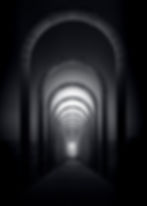Printing Bnw Fine Art Works
- Admin
- Mar 16, 2023
- 3 min read
Black and white photography is all about contrast – the interplay between light and shadow that creates depth and texture in an image. But what about the white tones? In a black and white photograph, white is just as important as black, as it can add a sense of luminosity and purity to the image. In fact, the way you print your black and white images can have a huge impact on the quality and impact of white tones (zones 7, 8 & 9) in your photograph.

In this blog, I'll share some techniques for accentuating the white tones in your black and white fine art photography prints.
· Choose the right paper
The type of paper you choose can have a big impact on the appearance of the white tones in your prints. Matte papers tend to have a more subtle white tone, while glossy papers can make the whites appear brighter and more vibrant. Some papers also have a slightly warm or cool tone, which can affect how the whites look in your prints. Experiment with different papers to find the one that works best for your particular image and printing style.
· Adjust your exposure
When printing black and white images, it's common to adjust the exposure slightly to enhance the contrast and tonality of the image to adjust the whites to right of the histogram since the displays like computer screens, tablets and mobile phones are inherently brighter which is not the case of paper sheets. But be careful not to overexpose the image, as this can cause the whites to lose detail and appear blown out. A slight increase in exposure can help bring out the detail and luminosity in the white tones, but be sure to check your highlights and make sure you're not losing any detail in the process.
· Use dodging and burning
Dodging and burning is a technique used in the darkroom (or in digital editing software) to selectively lighten or darken parts of an image. By dodging (lightening) the white areas of your image, you can help bring out the detail and texture in those areas, creating a sense of depth and luminosity. Be careful not to overdo it, as too much dodging can make the whites appear artificial or fake.
· Adjust the contrast
Contrast is key in black and white photography, and it can be used to enhance the white tones as well as the black ones. By increasing the overall contrast of your image, you can create a greater sense of depth and dimensionality, which can help accentuate the white tones. Just be sure to use a light touch – too much contrast can make your image appear harsh or unnatural.
· Try split-toning
Split-toning is a technique where you add a tint of color to the shadows or highlights of an image. In black and white photography, this can be used to give the white tones a slight tint, which can help enhance their luminosity and purity. Experiment with different colors and intensities to find the split-tone that works best for your image. I would scale down 20 to 40 percentage of toning effects from where I personally felt optimum to be safe.
In conclusion, accentuating the white tones in your black and white fine art photography prints can add a sense of luminosity and purity to your images. By choosing the right paper, adjusting your exposure and contrast, using dodging and burning, and trying split-toning, you can create prints that truly showcase the beauty and power of black and white photography. Happy printing!



